Garrya Nijo Castle Kyoto: A look at Banyan Tree Group’s new luxury boutique hotel in Japan
With a beautiful design and the view of a UNESCO World Heritage Site, the Garrya Nijo Castle Kyoto is a fine introduction to the hospitality group’s new Garrya brand, one of many new ventures as part of its global expansion plan.
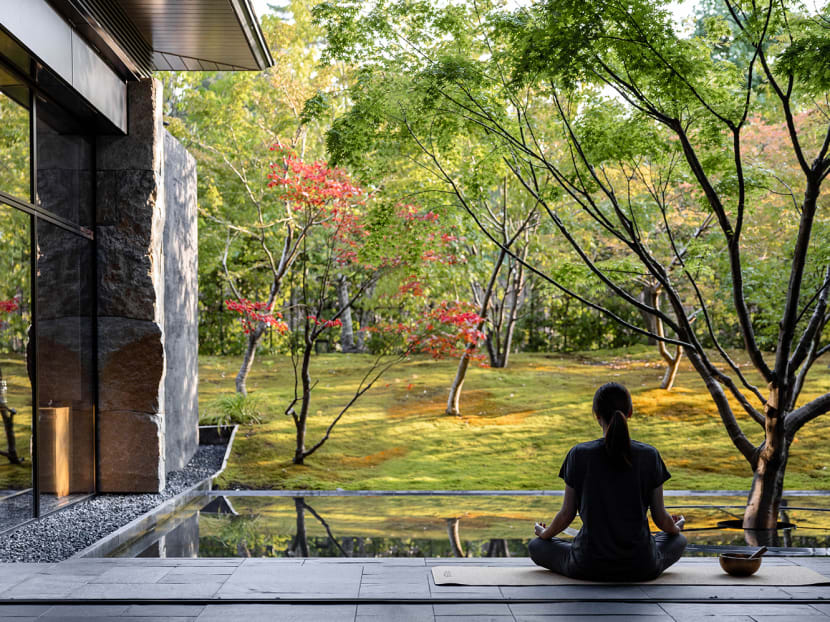
Garrya Nijo Castle Kyoto. (Photo: Banyan Tree Group)
The approach to Garrya Nijo Castle Kyoto is replete with nuanced encounters. The low-ceilinged driveway conjures an intimate sense of arrival, and the brick walls, small black cobblestones, and timber walls, ceiling and lattice door are a prelude to the rich tactility that defines the interiors.
To reach the lobby, one traverses a bamboo-lined passageway before turning into a dark corridor. And then, the quiet drama of a beautiful landscaped courtyard garden with Japanese maple, white oak, red reed and fern moss among other plants beyond the lobby. The image, both evocative and meditative, demands pause.
Garrya Nijo Castle Kyoto is the first property of the new Garrya brand conceived by The Banyan Tree Group. It is also one of two hotels in Kyoto that heralds the arrival of the reputed hospitality brand into Japan, the other being Dhawa Yura Kyoto.
The group partnered with the Wealth Management Group to convert the properties, which were formerly the Kyoto Yura Hotel Nijo Jo Bettei MGallery and Kyoto Yura Hotel MGallery respectively.
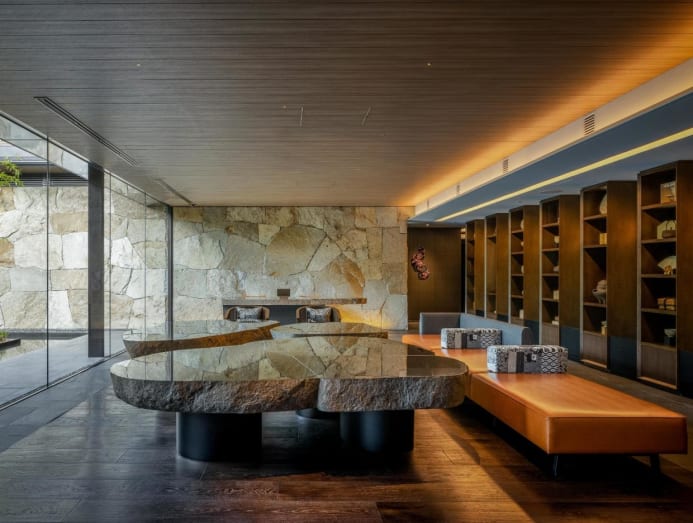
Garrya is named after flora with delicate small flowers strung together like silk tassels. Likewise, the brand embodies elegance, beauty and attention to detail. “Garrya offers a distinct approach to wellbeing for the urban traveller,” said Dharmali Kusumadi, Senior Vice President of Banyan Tree Hotels & Resorts.
“Designed for sophisticated travellers who enjoy the beauty of simplicity, Garrya is a minimalist haven providing a tranquil space for travellers to reconnect with the inner self in bustling urban areas.”
Crafted, thoughtful experiences are established through the use of natural materials, brevity of strokes, and the orchestration of views and spatial trajectories. The aforementioned arrival sequence is one such event, recalling Kyoto’s back alleys. In another, the delicate application of Japanese roof tiles aligns with the neighbouring cityscape of small houses and shops.
“(Like) Nijo Castle, which (portrays) a gorgeous and comfortable life while being protected by moats and trees, the hotel is designed to give a feeling of special hospitality, as a hidden space only for guests that cannot be seen from the outside,” said the team from Jun Mitsui & Associates, which designed the architecture.
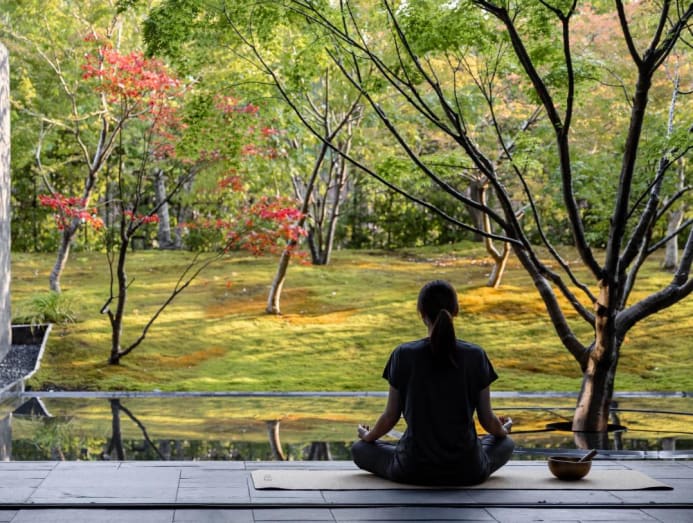
Yukio Design Studio (HYDS) conceived the interior design, with elegiac touches such as the large coffee tables in the lobby with roughhewn bases and glossy surfaces that turn fiery red and orange in autumn, and green in spring to reflect the garden’s foliage.
The hotel’s highlight is of course the proximity to and view of the historical Nijo Castle that many of the rooms face. Designated a UNESCO World Heritage Site in 1994, it was built in 1603 as the Kyoto residence of the Tokugawa Ieyasu, the first shogun of the Edo Period. The buildings on its sprawling grounds are the best surviving examples of castle architecture of Japan’s feudal era.
The hotel pays homage to the castle’s architecture. “Our design concept was oku (meaning “intimate” or “sacred”). It comes from the deep laneways particular to Kyoto. We sought to incorporate the composition of Nijo Castle, which was used as an imperial villa at one time where visitors gradually enter into the middle, protected from the surroundings by a moat, walls and gardens in a way that changes from scene to scene,” explained the architecture team.
The courtyard was positioned with Nijo Castle as a borrowed landscape in the background. The eaves around the building are expressed as two overlapping layers that accentuate the horizontal lines while giving a light effect to the eaves’ length. As testament to detail, the lower eaves match the material of the ceiling in the guestrooms, enhancing the inside-outside connection. The building feels at once modern but with a hint of the past.
At the lobby, Hashimoto was inspired by the shoin-zukuri style of residential architecture characteristic of a drawing room or study.
“There are 85 artworks and objects displayed in the lobby showcasing images of Kyoto, the traditional tea ceremony and Zen philosophy,” Kusumadi highlighted.
In fine-dining restaurant and bar Singular, which features the wakon yosai (meaning Japanese spirit with Western learning) French cooking style using ingredients only endemic to Kyoto, the dark atmosphere is cosy and contemplative.
The guestrooms are no less welcoming. Ranging from 40 to 53 square metres – generous for Japanese hotel room standards – some extend to the outside with balconies overlooking Nijo Castle’s grounds. “The interior decor celebrates Japanese heritage in a subtle manner, with vermillion-accented lacquer furniture, textured walls and minimalist spaces,” said Kusumadi. Skilled naguri artisans created the touches of intricate woodwork.
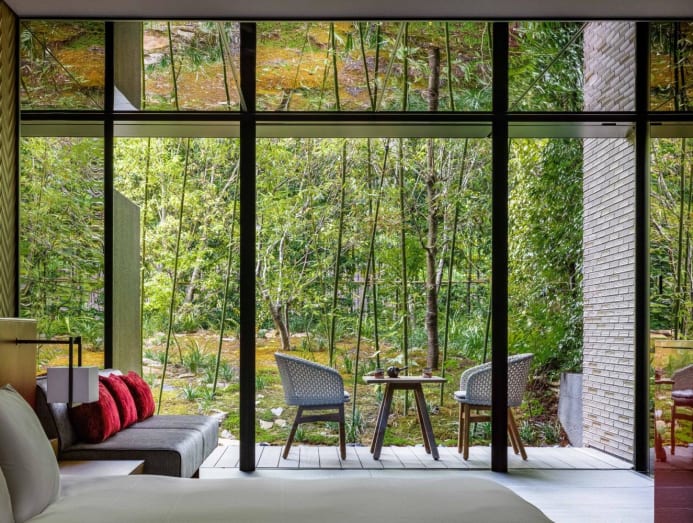
When The Banyan Tree Group took over the hotel, wellbeing elements were added in line with the brand’s overarching ethos of wellness. Yoga mats are available upon request and there are special wellbeing rooms with space for personal yoga practice or contemplation.
The opening of Garrya Nijo Castle Kyoto is part of the Group’s ambitious expansion plans. Last year alone, eight were opened worldwide, including this one. “Our group just signed 10 new management agreements, and is on course to open 14 more hotels in the next 12 months. Over the next three years, we expect to double our operating footprint to 100 by adding 50 new hotels,” said Kusumadi. This includes the Banyan Tree Mandai in Singapore that is designed by WOW Architects.
In Kyoto alone, aside from Garrya Nijo Castle Kyoto and Dhawa Yura Kyoto, three new hotels will open within the next five years. Banyan Tree Higashiyama Kyoto will open in Spring 2024 in the Gion Higashimaya district as the first and only hotel in Kyoto with a Noh stage.
Cassia Hirafu Niseko will open in 2025 in the popular ski resort area while Banyan Tree Ashinoko Hakone will open in 2026 in an area adjacent to the picturesque Lake Ashino.
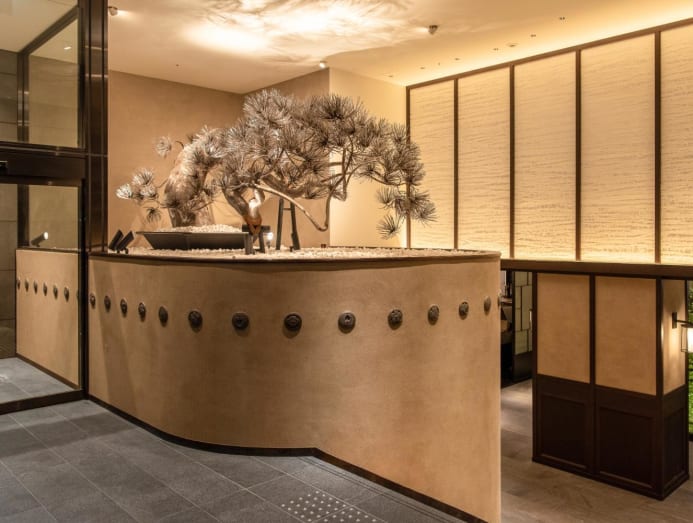
“We have been planning and preparing for expansion in Japan as a strategic market for a long time. The country boasts all the attributes of a great destination, with its rich culture and history, natural beauty across all seasons, high-quality products and services, excellent infrastructure and connectivity, as well as strong demand for domestic and international arrivals. Yet, surprisingly, few internationally branded hotels are able to provide the right type of service. For the right group with the right partners, it is ripe for a tourism boom,” said Kusumadi.
As expected, these new properties will feature stunning architecture. Kengo Kuma and Associates (KKAA) is the design architect for Banyan Tree Higashiyama Kyoto. The famed Japanese architect designed the Japan National Stadium for the 2020 Olympics as well as Singapore’s Founder’s Memorial in collaboration with K2LD Architects.
Meanwhile, HYDS designed the guestrooms and the former Wilson Associates, which has since merged with DWP (Design Worldwide Partnership), did up the public areas. Norwegian architecture firm Snohetta, whose strength lies in integrating the natural landscape, is designing Cassia Hirafu Niseko.
The decision to introduce new brands within the group’s portfolio reflects an awareness of different traveller profiles and demands. Currently, the group handles 10 global brands and brand extensions. Added to Banyan Tree, Angsana, Cassia, Dhawa and Laguna are Garrya, Homm and Folio (new brands), and Banyan Tree Escape and Banyan Veya (new brand extensions).
Banyan Tree Veya focuses on wellbeing programmes built on Banyan Tree’s eight pillars of wellbeing, while Banyan Tree Escape pioneers a “no walls, no doors” concept to “rewild” guests with nature.
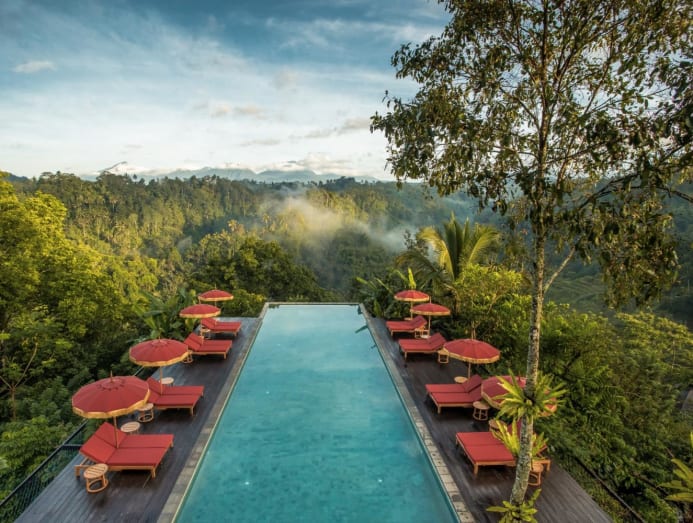
Another interesting location the Banyan Tree brand has ventured into is Saudi Arabia in November 2022. In addition, the Group will be making its debut in exciting new destinations, such as Mozambique with Banyan Tree Veya Ilha Caldeira, Banyan Tree Residences in Manila, Philippines, and Angsana Residences in Seoul, Korea.
“While we ‘go wide’ with this multi-branded growth, we balance this with our ‘go deep’ strategy of extending customer loyalty and lifetime value through our main flagship Banyan Tree brand, which constitutes 50 per cent of our portfolio,” said Kusumadi. “Each property needs to have a specific sense of place, which makes the design unique and not just based on a template or design standards. This in turn, will provide authentic guest experiences.”









